Tallinn, the vibrant capital city of Estonia, offers a culinary landscape as rich and diverse as its storied past. Nestled at the crossroads of ancient trade routes, Tallinn’s food scene is a delicious fusion of Nordic, Baltic, and Russian influences, creating a unique gastronomic tapestry that captivates both tourists and locals alike. Wandering through its historic streets, you’re bound to encounter an array of tantalizing dishes that embody the essence of Estonian heritage. From tantalizing street foods to refined restaurant fare, the flavors of Tallinn tell stories of tradition, innovation, and sustainability, offering something for every palate.
The Heart and Soul of Estonian Cuisine: Dark Rye Bread
One cannot truly experience Tallinn without indulging in the quintessential dark rye bread, a staple that holds a special place in the heart of Estonian culinary tradition. Recognized not just as a food, but a cultural emblem, this bread has been gracing tables across Estonia for centuries. It’s revered for its simplicity and timelessness, made with basic ingredients like rye flour, water, salt, sugar, and yeast. What sets it apart is the lengthy fermentation process, often taking up to 12 hours, resulting in a delightful, dense loaf with a slightly sweet yet hearty flavor.
This dark bread pairs beautifully with a variety of Estonian dishes, often served as an appetizer with a generous spread of fresh local butter. Despite its simplicity, the versatility of rye bread shines when teamed with toppings like smoked salmon or pickled herring. It’s ubiquitous across Tallinn, offered in homes, cafes, and celebrated eateries like the charming Olde Hansa, where the bread’s rustic appeal fits perfectly with the medieval-themed ambiance. For modern takes and delectable baking innovations, Tallinn’s RØST Bakery is a must-visit, famed for its artisanal interpretation of this classic bread.
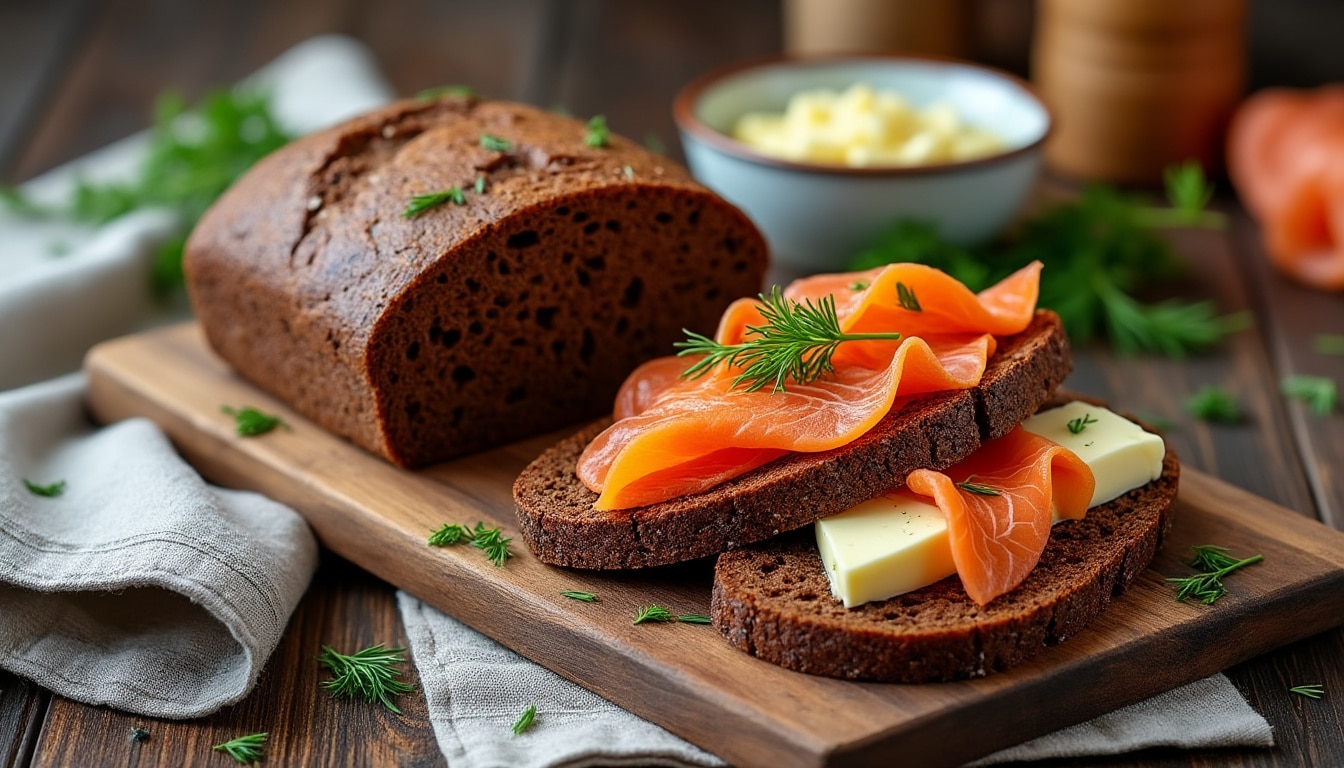
More than just a culinary staple, dark rye bread encapsulates Estonia’s connection to its agrarian past and its enduring sustainability practices. It symbolizes resilience, providing nourishment through harsh winters and sustaining communities throughout history. A visit to Tallinn offers the perfect opportunity to savor this beloved bread, engaging with the historical threads of Estonian culture, and understanding why locals hold it in such high regard.
The Surprising Popularity of Sprat Sandwiches: Kiluvõileib
Despite its humble appearance, the Kiluvõileib, or sprat sandwich, has earned a cherished place in the hearts and homes of Estonians. Made with a foundation of dark rye bread, this open-faced traditional dish consists of a layer of butter or egg butter, topped with thin slices of hard-boiled eggs, raw onions, fresh greens, and, most importantly, Baltic sprat, a flavorful fish native to the region. Its popularity peaks during festive occasions like weddings, birthdays, and holidays, cementing its status as a dish that brings people together.
Visually modest, the Kiluvõileib excels in flavor, owing its taste to the perfect balance between the rich savory fish and the contrasting sweetness of onions and rye. While the dish might be reminiscent of Scandinavian and Slavic cuisines, its roots are firmly planted in Estonian soil, making it a regional specialty that’s both a culinary and cultural testament. This delightful snack can be found in many eateries across Tallinn, but for a truly authentic experience, a visit to the cozy Kohvik Moon, renowned for its locally inspired dishes, is essential.
While it might not be the most glamorous dish, the sprat sandwich tells an enduring story of the Baltic Sea’s bounty and the culinary creativity borne out of necessity and tradition. It’s an illustration of how local ingredients shaped by historical influences still resonate within modern Estonian cuisine, providing insights into the nation’s collective palate.
A Hearty Comfort: Mulgipuder
For those who crave comfort food, Mulgipuder is an Estonian classic that warms both the body and soul. This traditional potato and barley mash, known to be 100% Estonian, reflects the agricultural heritage of the Mulgi region. Traditionally a farmhouse favorite, it was created with the produce that was readily available, serving as a nourishing dish during the long, cold winters.
The essence of Mulgipuder lies in its simplicity—mashed potatoes combined with groats, often enriched with crispy bacon, sautéed onions, and eventually topped with sour cream. It’s a humble yet delicious reflection of rural Estonian cooking, showcasing the resourcefulness and ingenuity of past generations. While a simple and rustic dish, its flavors are profound, offering a taste that’s both familiar and unique. Mulgipuder is best enjoyed in a cozy local restaurant like Fhoom or during a family gathering where traditional recipes are lovingly passed down and preserved.
This dish not only celebrates Estonia’s agricultural bounty but also embodies the spirit of community and togetherness in its preparation and enjoyment. As a representative of Estonia’s culinary legacy, Mulgipuder resonates with both nostalgia and the heartwarming flavors of home-cooked meals, making it a must-try for visitors eager to experience traditional Estonian fare.
Vibrant Flavors of Rosolje
The vibrant hues of Rosolje are sure to catch your eye at any Estonian feast. This colorful beetroot salad, boasting a history dating back to Estonia’s culinary heydays between the 1930s and 1960s, might have faced overthrown competition from the potato salad in terms of popularity, yet it remains a beloved classic.
Rosolje is composed of an intriguing blend of ingredients: boiled potatoes, vivid beetroot, tangy pickles, and salted herring, all dressed in a creamy mix of sour cream, mayonnaise, and mustard. This interplay of sweet, sour, and salty flavors highlights the Baltic penchant for harmonizing contrasting tastes. It’s a versatile dish, often customized with additions like hard-boiled eggs, apples, or even meat and can be relished at social gatherings or as a quick family dinner at home.
To enjoy this dish at its best, one could venture to NOP, a café known for its commitment to fresh, locally sourced ingredients and seasonal delights, making every serving of Rosolje memorable.
Epitomizing vibrant appeal and rich flavors, Rosolje is not just a testament to Estonia’s culinary tradition but a bridge between olden days and contemporary tastes, nodding to times when resourceful creativity was key in Estonian kitchens.
International Influence: Pelmeni
No exploration of Tallinn’s food would be complete without the inclusion of Pelmeni, a staple that echoes the city’s rich historical tapestry. These delightful dumplings, originally hailing from Russia, have been warmly embraced into Estonian cuisine, celebrated for their heartiness and comforting nature. Typically stuffed with various meat fillings—commonly beef, pork, or a blend—they are encased in a thin, delicate dough, then either boiled or pan-fried for a crispy finish.
Pelmeni is a favorite among many local restaurants, with unique variations reflecting a mixture of culinary traditions. In Tallinn, one can find both classic versions served in savory broths and innovative takes with creamy sauces like those found at the popular Vegan Restoran V, which offers diverse, creative fillings catered to plant-based diets. This reflects Estonia’s growing trend towards embracing diverse dietary preferences while upholding traditional flavors.
As a comforting winter food, Pelmeni resonates with warmth, providing a taste that many associate with family meals and festive gatherings. Its universal appeal lies in the tender flavors that transcend cultural boundaries, making it a beloved dish not just in Tallinn, but throughout Estonia and beyond.
The culinary landscape of Tallinn is vibrant and ever-evolving, harmoniously blending heritage with modern influences. From the humble slices of dark rye bread to the luxurious flavors of Pelmeni, each dish tells a story of tradition and adaptation. Whether you’re a first-time visitor or a seasoned traveler, Tallinn’s food promises a rich dive into flavors that are a testament to its history, culture, and community spirit. As you explore the city, take the opportunity to venture into cozy local spots for a taste of genuine hospitality and culinary passion, creating memories that linger long after your meal is done.
Elk and Wild Game Delights
For enthusiasts of wild game, Tallinn offers a delectable range of options, with elk being a standout choice. The city’s bounty of natural forests provides a rich source for this wild specialty, often serving as the main highlight at top culinary spots such as the renowned restaurant Olde Hansa, celebrated for its medieval-style feasts.
Typically braised to perfection, elk meat is luxuriously tender and deeply flavored, served with traditional accompaniments like black currant sauce, which adds a sweet-tart contrast to the savory meat. It’s often paired with roasted root vegetables or creamy mashed potatoes, making for a wholly satisfying meal that evokes the rustic charm of Estonia’s wilderness.
This dish is deeply rooted in Estonia’s tradition of embracing local resources, offering not just a meal but a connection to the surrounding landscapes and the age-old practices of sustainable hunting. For a modern twist on this classic, you might consider a visit to the upscale Rado restaurant, where innovative flavors meet the rustic authenticity of traditional game dishes.
The allure of wild game like elk extends beyond the unique flavors; it captures the heart of Estonian culinary adventure, providing food enthusiasts with an experience that’s both exotic and authentically native. As part of Tallinn’s gastronomic experience, it serves as a flavorful bridge connecting modern food connoisseurs with Estonia’s natural heritage and culinary craftsmanship.
FAQ
- 🍽️ What is a must-try dish in Tallinn? – Dark rye bread is considered a must-try for its rich cultural significance and delightful flavor.
- 🧈 Where can I experience traditional Estonian dining? – Olde Hansa provides a medieval dining experience with traditional Estonian dishes.
- 🥘 Are there vegan options in Tallinn’s cuisine? – Yes, Vegan Restoran V offers a variety of vegan dishes inspired by traditional Estonian cuisine.
- 🍤 Is seafood popular in Tallinn? – Yes, seafood, particularly sprats, plays a significant role in dishes like the traditional sprat sandwich.
- 🍨 Where can I find sweet Estonian treats? – Café Maiasmokk is well-known for its hand-painted marzipan and traditional pastries.
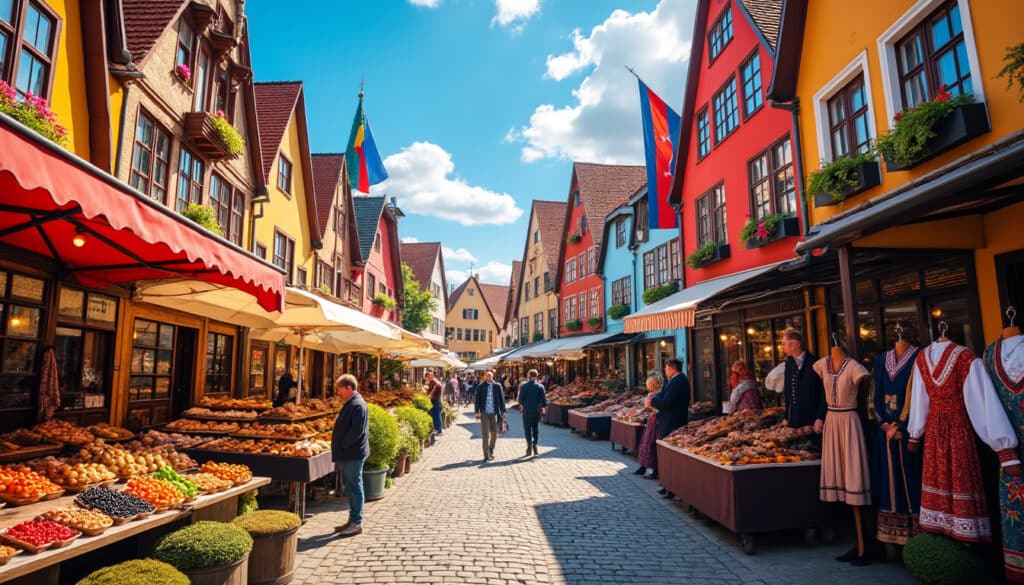
Culture & Local Life in Tallinn
Tallinn, the capital of Estonia, offers a captivating blend of time-honored traditions and modern dynamism. As of 2025, the city is renowned for its rich cultural tapestry and vibrant local life, echoing a fascinating past while embracing a sustainable, digital…
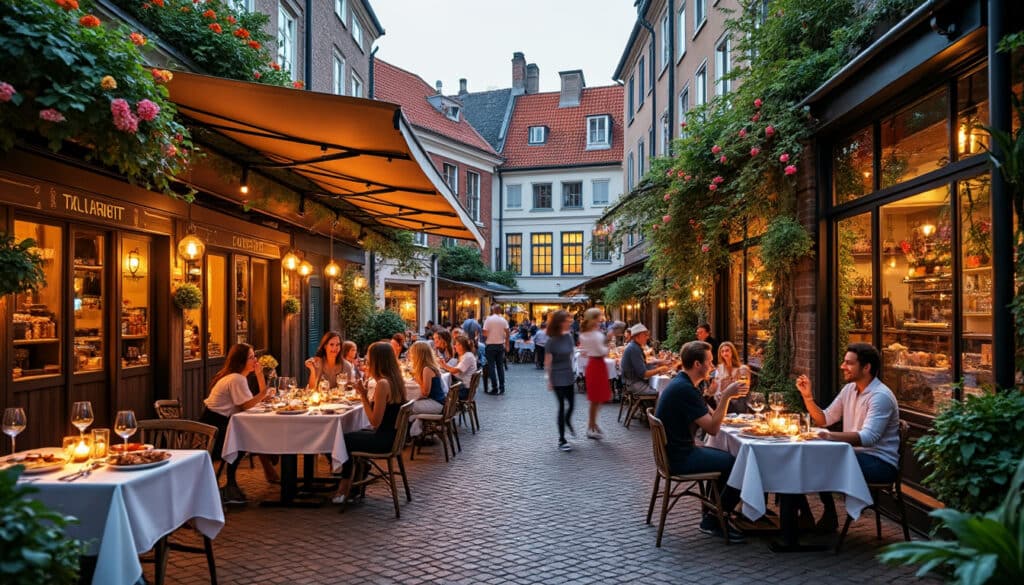
Famed for its enchanting medieval architecture and vibrant cultural scene, Tallinn, Estonia’s capital, is a rising star in the culinary world. With an eclectic mix of traditional and avant-garde cuisine, this city offers a gastronomic adventure for every palate. From…
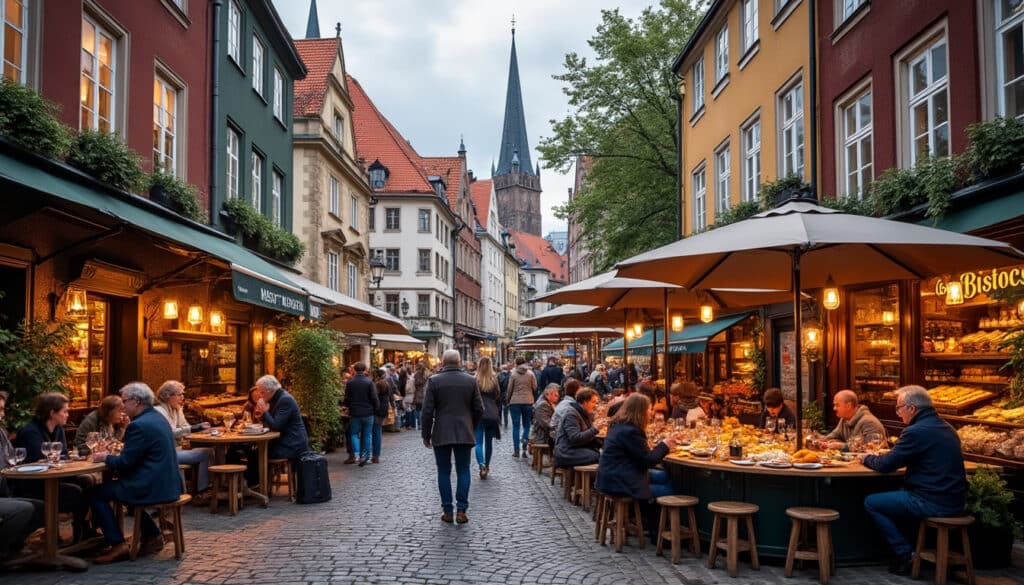
The captivating city of Tallinn, Estonia, offers many experiences to both its residents and visitors. Among its many attractions, the city’s unique meal times and dining culture stand out. Tallinn, the capital of Estonia, provides a captivating mix of traditional…
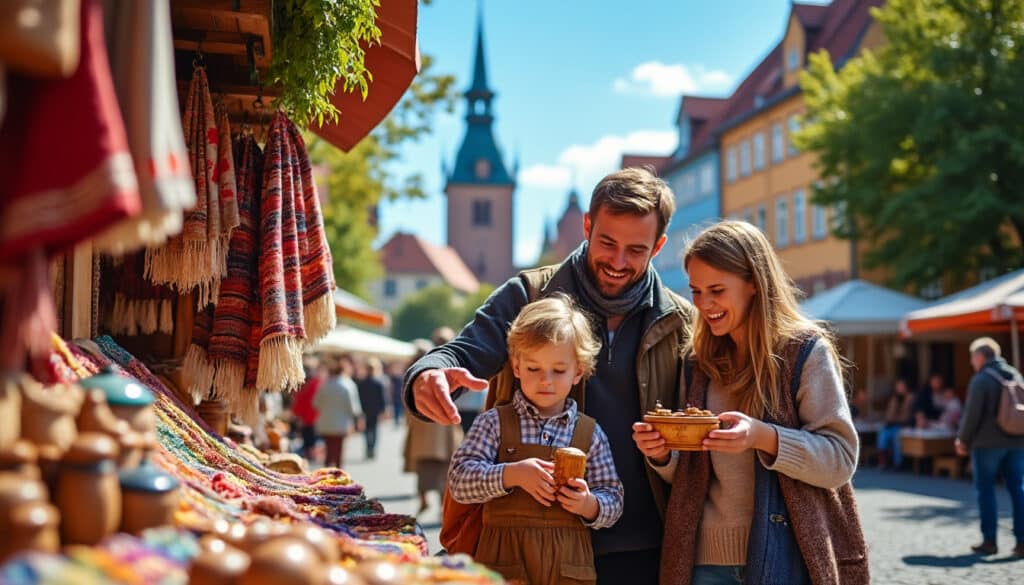
Souvenirs and shopping in Tallinn
Exploring Tallinn is like stepping into a fairy tale, with its cobblestone streets, medieval architecture, and vibrant culture. As you wander through this enchanting city, you’ll want to bring home more than just memories. Souvenirs from Tallinn are not only…
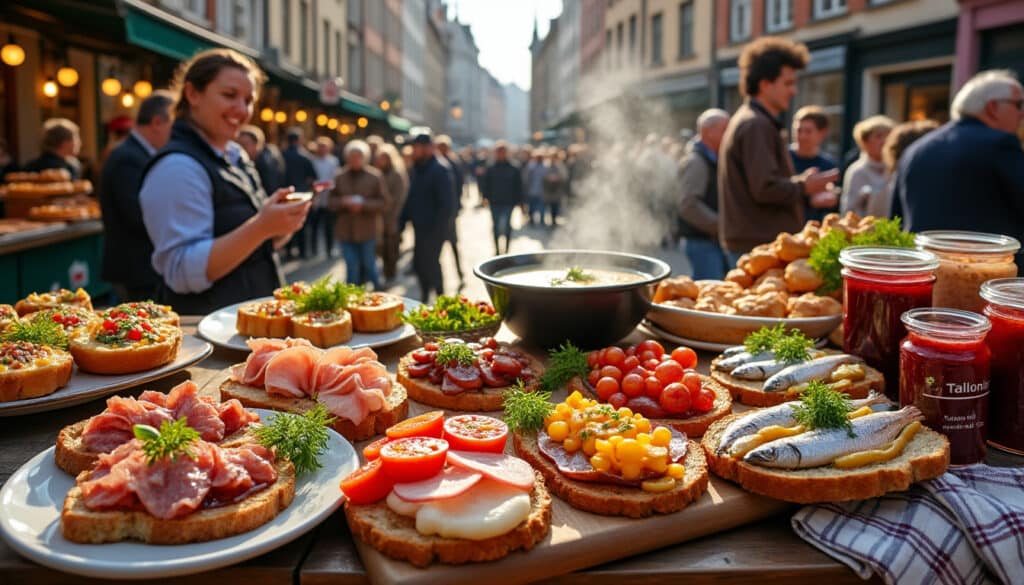
What do people eat in Tallinn?
Tallinn, the capital of Estonia, is a city where history and modernity intertwine harmoniously, offering visitors a unique culinary experience. This city is not just about medieval architecture and cobblestone streets; it’s a gastronomic haven where traditional Estonian dishes meet…


